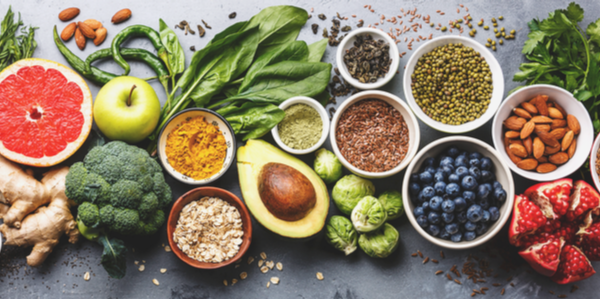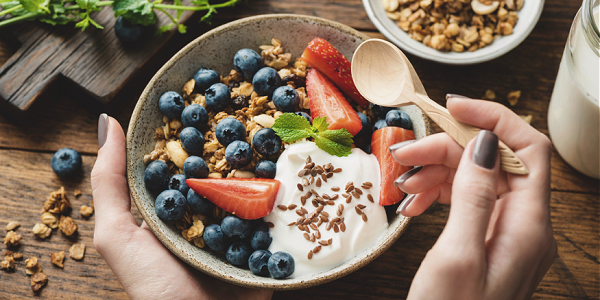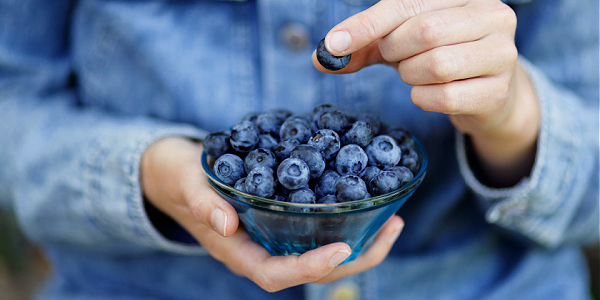
Antioxidants are all the rage right now. You may know that they are plentiful in fruits and vegetables, help with cancer prevention, or that they are simply good for you.
Nonetheless, few people actually understand what antioxidants do in the body. Or in other words, the antioxidant science.
Discover the foods high in antioxidants along with everything else you need to know about how antioxidants work in this extensive guide.
What Are Antioxidants?
Sometimes called free-radical scavengers, an antioxidant is a compound that prevents or slows damage to cells caused by free radicals. Antioxidants counteract the unstable free radicals that damage cell membranes, DNA, and other important parts of the cell by sacrificing their own electrons and "switching off" further harmful chemical reactions.
Free radicals are unstable molecules that the body produces in response to environmental pressures and other toxins. If body levels of free radicals creep too high, they can become harmful and are linked to many chronic diseases including cancer, diabetes, and cardiovascular disease.
While the body endogenously creates some antioxidants like glutathione (one of the strongest), it is typically not enough to eradicate the circulating free radicals. Thus, additional antioxidants must be consumed via foods and drinks. Certain antioxidants like vitamin C and E are considered essential, and while some others are not totally necessary, their addition can incur more health benefits.
Additionally, antioxidants can increase the shelf life of natural and processed foods, and therefore, are often used as food additives.
Highest Antioxidant Foods
• Beans
• Berries
• Blackberries
• Blueberries
• Goji berries
• Raspberries
• Cranberries
• Strawberries
• Dark chocolate
• Coffee
• Fruits
• Pomegranate
• Plums
• Dried fruit
• Vegetables
• Artichoke
• Cauliflower (raw)
• Kale
• Red cabbage
• Orange bell pepper
• Beets
• Sun-dried tomatoes
• Nuts and seeds
• Walnuts
• Pecans
• Pistachios
• Chestnuts
• Sesame seeds
• Flaxseed
• Spices/others
• Green tea
• Mint
• Cinnamon
• Cloves
• Allspice
• Oregano
• Basil
How Do Antioxidants Work?
The power of antioxidants is their ability to scavenge, neutralize or turn off free radicals. Also called reactive oxygen species, free radicals are an inevitable part of life.
The human body produces free radicals in response to external insults like pollution, tobacco smoke, UV rays, and inflammatory foods. However, they are also a normal byproduct of normal chemical reactions like exercise and fending off illness.
In the latter scenario, the immune system consumes oxygen that spins off a brigade of free radicals that aim to destroy viruses, bacteria, and other harmful cell parts. Even though free radicals provide some benefit on occasion, the body still needs a way to ensure they do not accumulate too much.
Factors known to produce substantial free radical formation include:
• Alcohol intake
• High blood sugar levels
• High intake of polyunsaturated fats (refined vegetable oils and processed/packaged foods)
• Radiation and excessive sunbathing
• Bacterial, viral, and fungal infections
• Excessive iron, magnesium, copper, or zinc intake
• Intense and prolonged exercise
• Antioxidant deficiency or toxicity
• Too much or too little oxygen
If free radicals outnumber antioxidants, it leads to a state known as oxidative stress. This can create high levels of inflammation and make it harder for the body to prevent acute and chronic illnesses. Prolonged oxidative stress damages DNA and can lead to cellular death, and damage to DNA increases the risk of cancer and increases the aging process among other effects.
Specifically, oxidative stress is associated with:
• Arthritis
• Cancer
• Emphysema
• Heart disease
• Immune deficiency
• Metabolic syndrome
• Parkinson's
• Respiratory disease
• Stroke
• Vision loss/problems
Along with acting as a free radical scavenger, they also exert function by serving as a hydrogen donor, peroxidase decomposer, singlet oxygen quencher, enzyme inhibitor, synergist, or metal-chelating agent.
In summary, these processes aim to reduce the activity of free radicals that cause oxidative stress for cells.
Health Benefits of Each Type of Antioxidants
Although antioxidants undoubtedly help balance free radical activity, scientists still do not know their full gamut of effects or functions and can hardly identify all of them. In fact, there are more than 4,000 known flavonoids, and that is merely one class of antioxidants!
Moreover, antioxidant-rich foods are frequently nutritious in a variety of other ways. They tend to also offer fiber, high-quality forms of macronutrients, and other phytochemicals that increase the antioxidant effects.
Furthermore, science typically lumps all antioxidants into one category because their ultimate activity is similar. However, certain antioxidants likely exert very specific prevention and treatment properties that researchers still need to elucidate further. For this reason, it is wise to eat a variety of foods since antioxidant activity is not likely interchangeable, and one needs many different foods to obtain specific antioxidants.
All in all, the term 'antioxidant' is not so much the name of a substance and is more of a term that describes what different substances accomplish. Nonetheless, science typically categorizes antioxidants into groups known as phytonutrients, flavonoids, flavones, catechins, polyphenols, and phytoestrogens. Once again, each group likely exerts a slightly different function.
Now, the best sources of antioxidants are plant foods – especially fruits and veggies – but some animal products also boast antioxidant activity. It is always best to obtain the majority of antioxidants from whole foods, as antioxidant dietary supplementation is not well researched. The following vitamins, minerals, and nutrients are some of the most potent antioxidants:
Vitamin A
• Health benefits: promotes clear and healthy vision; forms and maintains teeth, skeletal and soft tissues, and skin
• Food sources: beef liver, eggs, red meat, dairy
Vitamin C
• Health benefits: supports the immune system; helps with tissue growth and repair, wound repair; adrenal gland function
• Food sources: bell peppers, broccoli, potatoes, citrus, and other fruits
Vitamin E
• Health benefits: prevents and delays heart disease and risk factors; supports exercise recovery
• Food sources: wheat germ, almonds, walnuts, hazelnuts, and other monounsaturated fats
Beta Carotene
• Health benefits: prevents cataracts; promotes proper night vision
• Food sources: orange and yellow plant foods, dark leafy greens
Lutein
• Health benefits: lowers the risk of developing cataracts and macular degeneration
• Food sources: leafy greens, corn, carrots, squash
Lycopene
• Health benefits: helps prevent heart disease and complications/risks
• Food sources: red, fleshy fruits like tomatoes and watermelon
Selenium
• Health benefits: fights against cancer; supports thyroid health
• Food sources: brazil nuts, seafood, lean meat, whole grains
The Takeaway
Antioxidants are food substances that counteract or neutralize free radicals, usually by donating an electron, inhibiting enzymes, chelating heavy metals, or synergistically working with another substance.
This is vital to human health because free radicals, although a normal byproduct of many bodily reactions, can damage cells and DNA, which increases oxidative stress and inflammation. If left unchecked, these latter problems then lead to chronic diseases like cancer and diabetes.
There are thousands, perhaps, millions of different antioxidants. While some like the powerful glutathione are endogenously produced, it is important to obtain more from whole foods.
Fruits and vegetables typically contain the most potent doses of antioxidants, although some animal products also contain these helpful scavengers. Furthermore, while vitamin C, vitamin E, and selenium are widely considered the most important antioxidants, it is wise to obtain a variety since they each exert different functions.
Eat the rainbow to obtain these important molecules!
References:
Arnarson, A. Antioxidants Explained in Simple Terms. Healthline. Updated July 29, 2019. https://www.healthline.com/nutrition/antioxidants-explained.
Cunha J. What Foods Have the Highest Antioxidants? 30 Top Healthy Foods. EMedicineHealth. Reviewed July 13, 2020. https://www.emedicinehealth.com/what_foods_have_the_highest_antioxidants/article_em.htm.
Gets L. Making Sense of Antioxidants. Today's Dietitian. Published September 2008.https://www.todaysdietitian.com/newarchives/082508p50.shtml.
Understanding Antioxidants. Harvard Health. Published January 31, 2019. https://www.health.harvard.edu/staying-healthy/understanding-antioxidants.
Ware M. Antioxidants: Health Benefits and Nutritional Information. Medical News Today. Written May 29, 2018. https://www.medicalnewstoday.com/articles/301506#diet-.







